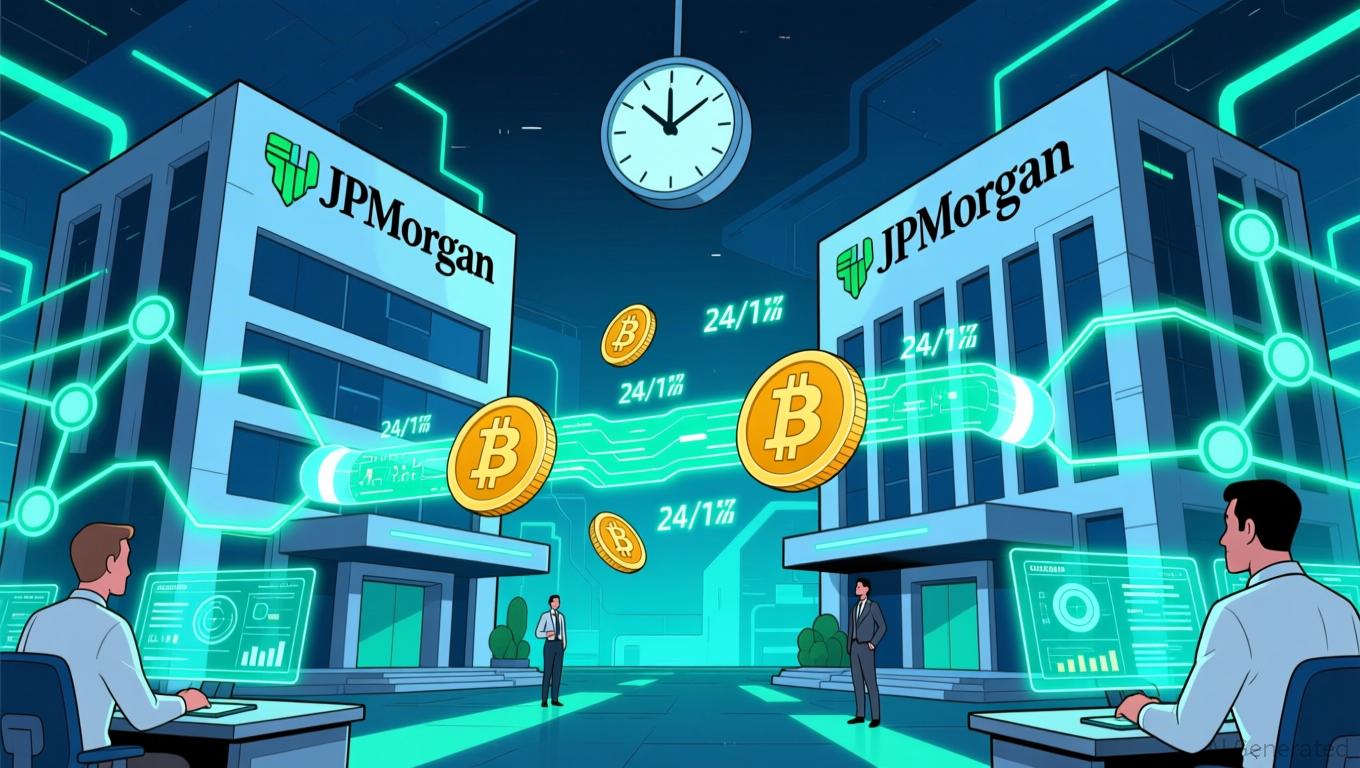Visa’s Stablecoin Express Lane: Seamless, Real-Time Global Payments for Freelancers
- Visa launches stablecoin pilot for instant global payouts to gig workers, bypassing traditional banking infrastructure. - Program uses USD-backed stablecoins to address currency volatility and limited banking access in underbanked regions. - Initiative aligns with blockchain integration strategy, supported by regulatory clarity from the GENIUS Act and Visa's tokenized asset platform. - Pilot complements Visa's legal settlement negotiations with merchants and positions the company to maintain leadership i
Visa Inc. (V) is ramping up its involvement in stablecoin-based payments through a pilot project aimed at streamlining payouts for creators, freelancers, and gig workers worldwide. Announced at Web Summit 2025, this program enables businesses to transfer USD-pegged stablecoins straight to recipients’ digital wallets, eliminating the need for conventional banks and making transactions nearly instantaneous, according to a

Visa’s stablecoin projects are gaining
The launch of the pilot comes as Visa moves closer to settling a longstanding legal battle with U.S. merchants over interchange fees. Visa and Mastercard Inc. (MA) are approaching a proposed agreement that would lower fees by 10 basis points and give retailers more freedom to decline premium rewards cards, according to a
For those working in the gig economy, Visa’s stablecoin pilot marks a major step toward greater financial independence. By offering fast, global payments, the platform addresses common challenges faced by freelancers and creators who often experience payment delays with traditional systems, according to the Nasdaq report. With plans to expand the pilot and a broader rollout anticipated in 2026, Visa demonstrates its dedication to meeting the digital-first needs of today’s workforce, as also reported by Nasdaq. As Visa navigates regulatory and market shifts, its focus on both innovation and settlement agreements signals a strategic move to maintain its leadership in the rapidly changing payments landscape.
Disclaimer: The content of this article solely reflects the author's opinion and does not represent the platform in any capacity. This article is not intended to serve as a reference for making investment decisions.
You may also like
Astar (ASTR) Price Rally: Blockchain Connectivity Driving DeFi Expansion
- Astar (ASTR) surged 1.95% in Q3 2025 due to cross-chain integrations and institutional adoption, highlighting blockchain interoperability's role in DeFi growth. - Strategic partnerships with Animoca Brands and Sony are bridging Web2/Web3 ecosystems, while Chainlink CCIP enables $12T+ in secure cross-chain transactions. - Astar 2.0's zkEVM and 150,000 TPS scalability, plus 20% wallet growth and $3.16M whale accumulation, signal strong institutional confidence despite 30-day 24.9% volatility. - TVL reached

JPMorgan Connects Traditional Finance and Decentralized Finance Through Blockchain-Based Deposit Token
- JPMorgan launches JPM Coin, a blockchain-based deposit token for institutional clients, enabling instant settlements via Coinbase's Base network. - The yield-bearing token represents USD deposits, offering faster transactions than stablecoins and expanding to euros and other blockchains. - JPMorgan bridges TradFi and DeFi by leveraging public blockchain infrastructure, aligning with industry trends toward faster, lower-cost payment systems . - The bank increased BlackRock Bitcoin ETF holdings by 64% in Q

Bitcoin Updates Today: Centralization Issues in Bitcoin Mining Face a Decentralized Funding Response
- Maestro launches Mezzamine, a BTC yield platform connecting institutional investors with miners to address $2 trillion in idle Bitcoin and mining capital shortages. - The platform uses on-chain secured credit facilities, offering miners liquidity backed by hashrate and energy assets while providing investors with decentralized yield opportunities. - By channeling institutional BTC into mining, Mezzamine aims to decentralize operations, enhance network security, and reduce hashpower concentration. - Over

Brazil's Cryptocurrency Regulations: Combating Scams or Raising Concerns Over Surveillance?
- Brazil's central bank mandates $7M+ capital reserves for crypto firms, classifying stablecoin trades as FX operations under new 2026 rules. - VASPs must obtain BCB licenses by November 2026, with capital requirements varying from $2M to $7M based on business type. - Stablecoin transactions now require FX-style documentation, while self-custody wallet transfers face enhanced AML tracking and owner verification. - Critics warn of privacy risks and "total surveillance," but officials highlight consumer prot
